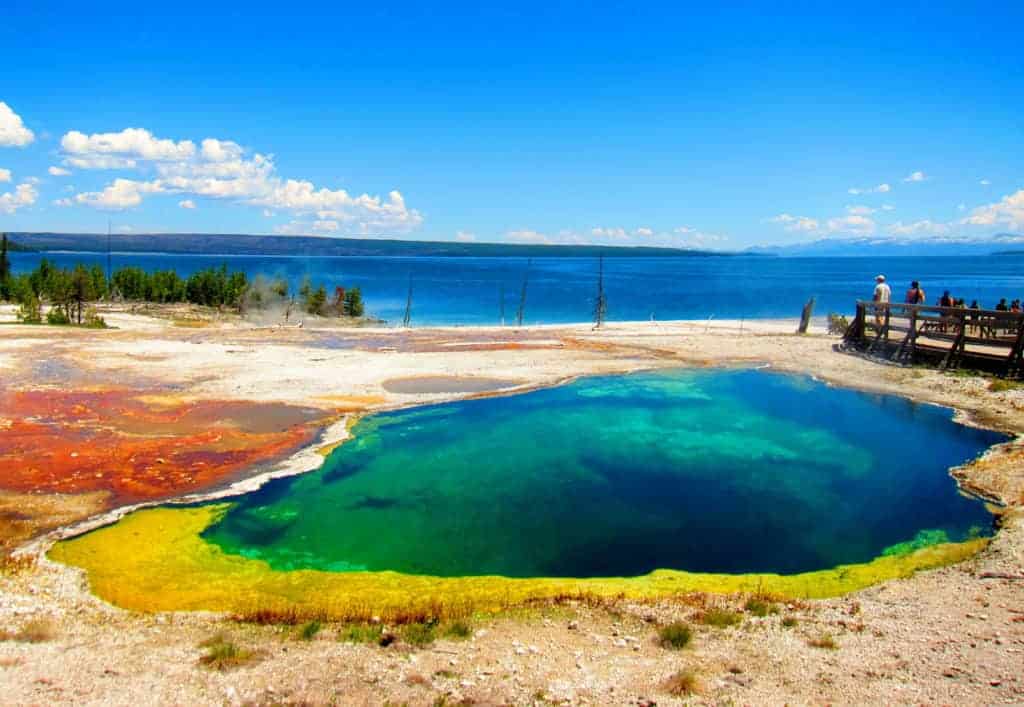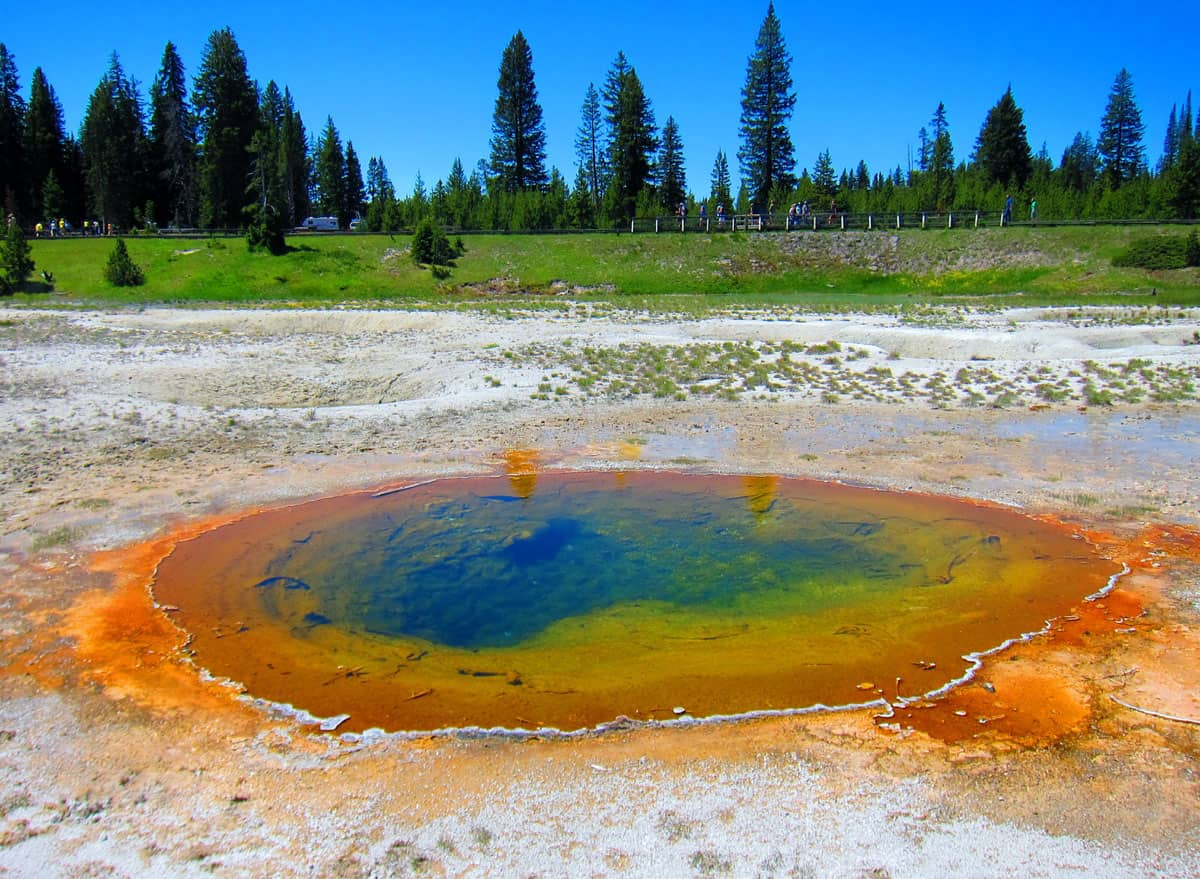Yellowstone's vast expanse is home to many gems, but the West Thumb Basin stands out with its unique blend of a vast clear lake juxtaposed against the pulsating geothermal basin on its shores.
Throughout the years, especially in the summers of 2011 and 2013, this location has captivated many with its breathtaking sights. So, why not embark on a visual journey through the West Thumb Basin, equipped with tips to enhance your next visit?
Yellowstone, in its raw beauty, consistently evokes awe and wonder. Every visit to this park is a testament to nature's grandeur, where age-old geological marvels play out for all to see.
While Yellowstone boasts several geothermal basins, the West Thumb Basin shines with its hydrothermal pools, "paint pot" pools, fumaroles, and bubbling mud.
The pièce de résistance? The serene blue expanse of Yellowstone Lake provides a perfect backdrop to these vibrant thermal spots.
Why Is it Called the West Thumb Basin?
Here's a map of Yellowstone Lake. Use your imagination to make out the shape of an upside-down hand there.

The various arms are like the hand's fingers. In the same line, the area sticking out to the west, the "west thumb."
What to Do When Visiting the West Thumb Geyser Basin?
Start at the visitors center, and from there, the West Thumb Geyser Basin Trail will guide you through the myriad pools and attractions.
Elevated and looping, this trail ensures safety from the park's lurking dangers, like the scalding hot pools reaching temperatures up to 93°C (200°F).
Thankfully, clear signages abound, ensuring that gems like the Abyss Pool, with its depth-induced color variations, don't go unnoticed.

And don't be fooled by names. The Black Pool, for instance, mesmerizes with its vivid blue hues.

Other features to anticipate include the Perforated Pool.

And of course, the famous fishing cone.

The Fishing Cone might not look as striking in the picture.
This is because it was taken in early July, when Yellowstone Lake often rises due to heavy rains, covering the Fishing Cone.
In the past, it was an active geyser. However, it no longer erupts because it's often covered in cold water.
What Geysers Can You See at West Thumb Geyser Basin?
Visitors shouldn't expect to witness eruptions similar to Old Faithful in this basin, despite its name.
While it's termed a geyser basin, eruptions are uncommon here.
Instead, the attraction lies in the bubbling mud pools at the Paint Pots area and the hot pools' intermittent bubbling and cauldron effects.
What else should you do at West Thumb Geyser Basin?
Go hiking! The trail in the basin is about a mile long, but several excellent trails are nearby. This is a beautiful area of the lake.
The lake's shape there means you have a direct line of sight to the mountains in the distance and the closer shores opposite you. It's just very pretty.

The lodgepole forest and the grass are quite welcoming for a stroll or a more strenuous hike.

The Pelican Creek trail is a popular choice for many visitors. It's an easy and enjoyable trail that offers close-up lake views.

Please don't forget to ask the rangers before going on the trail, or at least look for any warnings and notices.
Grizzly bears forage for berries here during fall, so the rangers sometimes close this trail and others.
If you can, join a ranger-led activity in the area, especially if you're traveling with kids and they're on a mission to get the Yellowstone Jr. Ranger patch.
Here are more ideas on how to make the most of your visit to any National Park, most can be applied while visiting Yellowstone as well.
Even More Pictures of Yellowstone's West Thumb Basin!
This post is all about eye candy, after all! So, we'll leave you with more photos taken during our visits.
If you haven't visited this amazing spot in the park yet, we hope these will make you add it to your Bucket List!












Questions? Comments? Let me know what you think!
Remember to spread the beauty of West Thumb Basin by pinning the following image to your social platforms.


Beautiful pictures!!! Lovely article- thank you!!
So glad you like it – I hope you visited there – or will get to visit sometime!
p to 93 fahrenheit!
Danger! This number is absolutely wrong. The water temperature is around 200 degrees Fahrenheit. This is scalding, near boiling.
This is around 93 degrees centigrade.
Hi Tommy,
Thanks for the comment and you’re absolutely right of course. I had meant that to be 93 celsius which is far less inviting than 93 fahrenheit! That’s for being so vigilant and taking the time to send in your comment. I just made the correction.